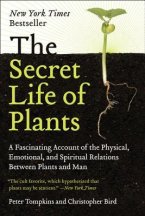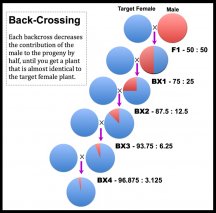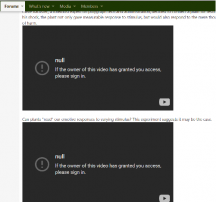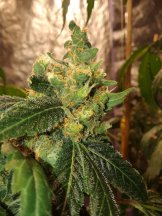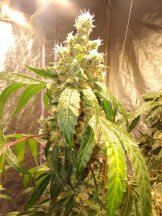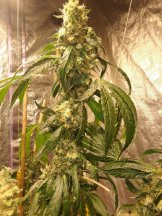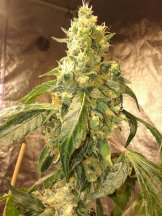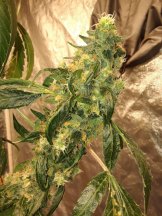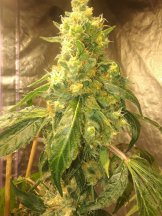For your consideration....
This will not be cannabis specific, but is wholly applicable to its cultivation. Usually I hesitate to share this information because of the immediate rejection of the premise. I ask that you merely consider the information/data presented.
This book is one of a few that has greatly affected my personal world-view in a way that cannot be undone. It is very much a scenario of, "once you learn it, you can't unknow it."
Seeing as it is a New York Times bestseller, it can hardly be considered a total secret, but it was by happenstance that I initially came across this book. Having experience teaching sciences, I feel there is a deep disservice to not include the information found in this book as part of the general curriculum.
There is an accompanying film to this book that demonstrates some of the experiments conducted which suggest that plants not only "think", empathize with humans, remember information, and have the capacity to learn, but that it suggests a mode of energy transfer still mysterious to the hard sciences. I have edited the film to show specific experiments below.
Cleve Backster, a foremost expert on polygraph tech and administration, decided to connect a plant for testing. To his shock, the plant not only gave measurable response to stimulus, but would also respond to the mere thought of harm.
Can plants "read" our emotive responses to varying stimulus? This experiment suggests it may be the case.
Imagine a piece of equipment that would allow you to hear a plant "speak". Now take it further and imagine a plant displaying an apparent phonetic "sounding out" as it learns the alphabet.
Testing the plants' "ability", these researchers constructed an experiment where 5 separate individuals would enter a room of 2 plants. One of the individuals had the instruction to destroy one of the plants. This created a clear response from the other plant suggesting an awareness to the harm. The 5 individuals later reentered the room one-by-one with the first 4 eliciting no response from the surviving plant. When the 5th "plant killer" individual reentered the room, the surviving plant began to respond dramatically as if terrified they were next. This response could be interpreted as the plant "remembering".
Imagine being able to tap into these plant signals to automate an entire grow powered only by the plants' expressed needs.
Again, just for your consideration.
This will not be cannabis specific, but is wholly applicable to its cultivation. Usually I hesitate to share this information because of the immediate rejection of the premise. I ask that you merely consider the information/data presented.
This book is one of a few that has greatly affected my personal world-view in a way that cannot be undone. It is very much a scenario of, "once you learn it, you can't unknow it."
Seeing as it is a New York Times bestseller, it can hardly be considered a total secret, but it was by happenstance that I initially came across this book. Having experience teaching sciences, I feel there is a deep disservice to not include the information found in this book as part of the general curriculum.
There is an accompanying film to this book that demonstrates some of the experiments conducted which suggest that plants not only "think", empathize with humans, remember information, and have the capacity to learn, but that it suggests a mode of energy transfer still mysterious to the hard sciences. I have edited the film to show specific experiments below.
Cleve Backster, a foremost expert on polygraph tech and administration, decided to connect a plant for testing. To his shock, the plant not only gave measurable response to stimulus, but would also respond to the mere thought of harm.
Can plants "read" our emotive responses to varying stimulus? This experiment suggests it may be the case.
Imagine a piece of equipment that would allow you to hear a plant "speak". Now take it further and imagine a plant displaying an apparent phonetic "sounding out" as it learns the alphabet.
Testing the plants' "ability", these researchers constructed an experiment where 5 separate individuals would enter a room of 2 plants. One of the individuals had the instruction to destroy one of the plants. This created a clear response from the other plant suggesting an awareness to the harm. The 5 individuals later reentered the room one-by-one with the first 4 eliciting no response from the surviving plant. When the 5th "plant killer" individual reentered the room, the surviving plant began to respond dramatically as if terrified they were next. This response could be interpreted as the plant "remembering".
Imagine being able to tap into these plant signals to automate an entire grow powered only by the plants' expressed needs.
Again, just for your consideration.

